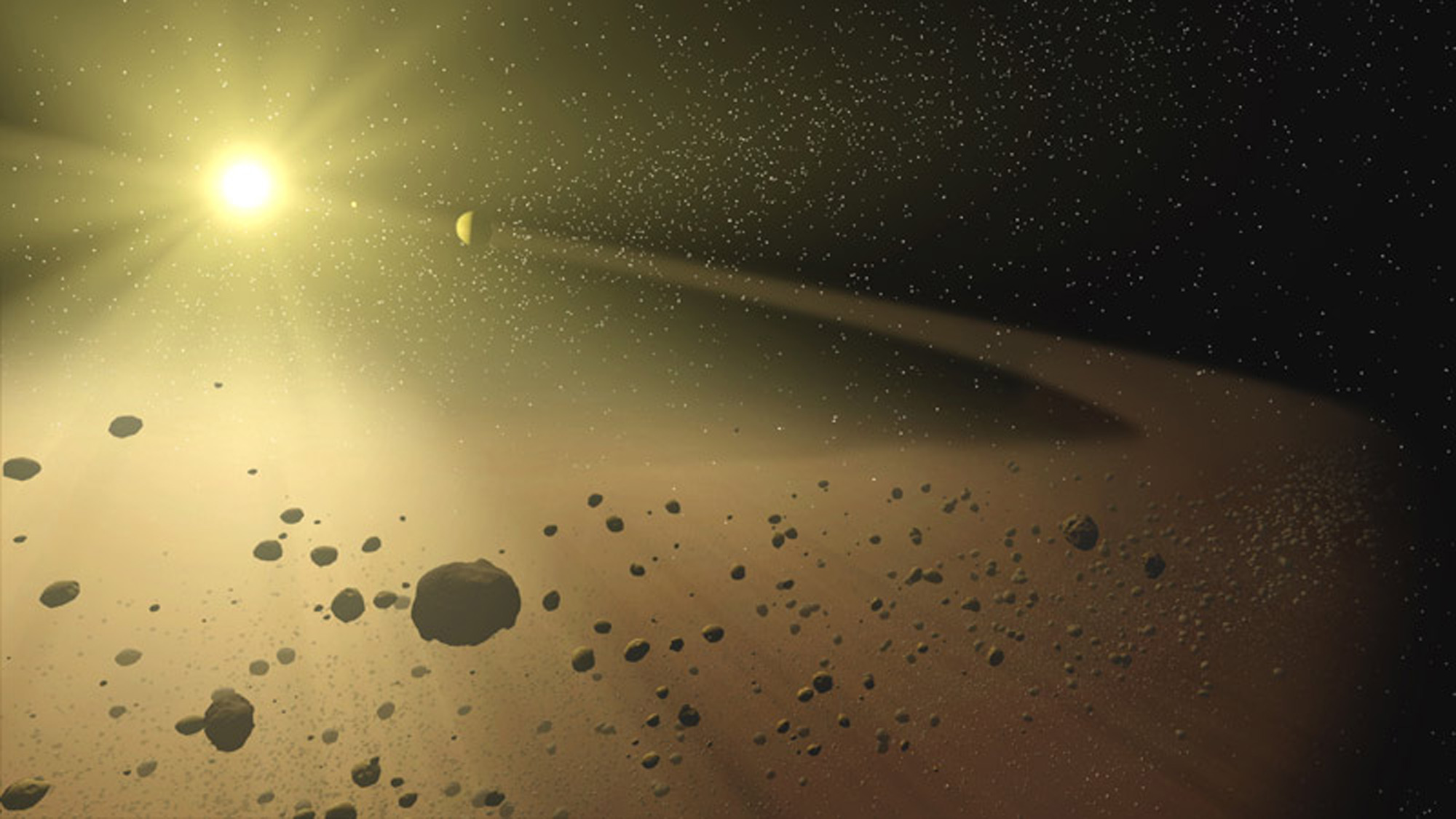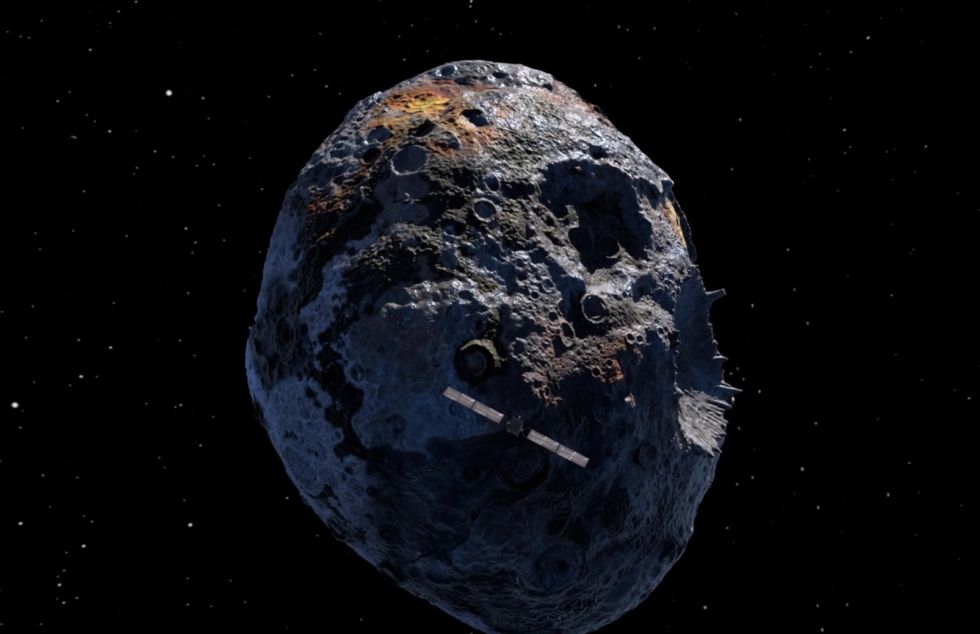NASA: instead of an expedition to Venus, we will send two probes to the asteroid belt

NASA receives quite substantial funding from the state. In fact, this organization receives more money than any other space agency in the world. But space exploration is expensive, so even NASA has to choose. This week, the agency management announced its choice: two upcoming missions to study asteroids of various classes. The missions were named Psyche and Lucy.
Both missions have similar features - their goal is to study asteroids. But two different classes of these celestial bodies will be studied. It is also worth saying that their study will begin no earlier than 2020, perhaps later. Unfortunately, NASA had to abandon three other missions in favor of those that were chosen. The first two "refusers" - the study of Venus (atmosphere and surface). And one more thing is the creation of the NEOCAM tool that would help scientists discover asteroids that threaten Earth. According to experts from NASA, the study of asteroids will help to understand the origin and evolution of the solar system.
“These missions will help us understand what the period of birth of the solar system represented, which is only 10 million years from the appearance of the Sun itself,” said JA Green, a spokesman for NASA.
')
Psyche

Here we are talking about a mission that starts in 2023. The purpose of this mission is to send an automatic probe to an asteroid located in the belt between Mars and Jupiter. It is called Psyche 16. The diameter of the asteroid is 210 km, making this asteroid one of the ten largest objects in the asteroid belt. And this is a very interesting object to study, since it consists mainly of iron and nickel. Scientists believe that this object could well have previously been the core of a planet the size of Mars. But for some reason the outer crust was lost by this planet and only the core remained. Perhaps the reason - the sequence, a series of very strong collisions with large objects.
In order to fly to an asteroid, the device will need about six years. The object is located in 3 AU. from the sun. After approaching the asteroid, the device will spend about a year mapping its surface and studying various properties. Scientists do not know exactly what they can find on the asteroid, because man has never studied the metal worlds, it was only about asteroids and comets, consisting of ice and rock. Experts hope to find answers to questions about the origin and properties of our planet. The metal core, according to scientists, is not only the Earth. Mars, Venus and Mercury have similar nuclei.
The probe will be equipped with a number of scientific instruments, including magnetometers, spectrometers, a gamma-ray detector and a neutron spectrometer. It is planned to conduct several experiments that will help to understand what this celestial body represents. Over time, after a year, the probe will descend in a spiral orbit lower and lower towards the surface of the asteroid. The maximum convergence will be 105.5 km. This will allow to study in detail the structure of the surface of Psyche 16. Astronomers will try for the time allotted for the probe to understand how the formation of planets takes place, and what the core of the planet can be.
Lucy

The second mission is scheduled for 2021. Its goal is to study the so-called Trojan asteroids. Trojan asteroids are a group of asteroids located in the vicinity of the Lagrange points L4 and L5 in the 1: 1 orbital resonance of any planets. The first asteroids of this type were found in Jupiter. These asteroids are named after the characters of the Trojan War described in Homer's Iliad.
The asteroids will be studied using another probe that will arrive in the small asteroid belt by 2025. After this, he must fly around five Trojan asteroids at once. This phase of the mission will continue from 2027 to 2033. Scientists practically do not know anything about those objects that are located in that region of the solar system.
“This is a unique opportunity. Since Trojan asteroids are the source material from which the outer planets were formed, they can clarify some questions about the origin and evolution of the solar system, ” said Harold F. Levinson, chief scientific officer of the mission Lucy.
During flyouts of its targets, the probe will study the color, surface structure and geology of the asteroids. These data will help to find out how the giant planets were formed, as well as when and why they entered their current orbits. The device will also search for primary organic compounds on the surface of asteroids.
The Lucy probe will be equipped with a number of technical elements that are part of the New Horizons probe platform. Let me remind you that this device successfully reached Pluto in 2015. In particular, Lucy will be equipped with the updated RALPH and LORRY tools. Why was the mission and the probe itself called "Lucy"? Because that is how they called primate, Afar Australopithecus , considered the ancestor of man. Lucy at one time found Richard Leakey, authoritative anthropologist and paleontologist.
And a little bit about the mundane
Yes, about the money. Both missions will cost NASA (and therefore US taxpayers) $ 400- $ 500 million USD. This is not too much, since the creation and launch of the Curiosity rover cost $ 1 billion, not to mention the New Frontier missions, including the New Horizons.
But this money will not be wasted - thanks to them, humanity will be able to get a huge amount of information about the structure and origin of various objects of the solar system. Perhaps, in the end, all this will help to find out how our system and our planet were formed.
Source: https://habr.com/ru/post/370039/
All Articles